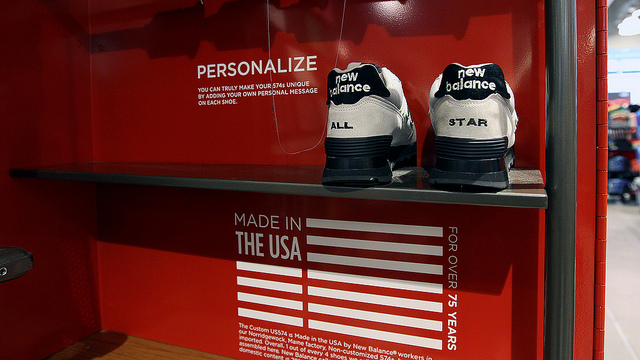30
Extreme personalization, sometimes referred to as marketing to a customer segment of one, is the holy grail of the multi-channel world.
Extreme personalization comes down to one simple reality: customers expect your company to know who they are, no matter what method or touch point they are using. Whether they are shopping in-store, online, through Facebook or by phone, customers want to receive a consistent, high-quality experience from your brand.
The challenge is that to get to extreme personalization, marketers must have what they need to reach out directly to a real individual rather than a general marketing persona. Today, most commerce systems remain siloed. Point of sale systems in-store are not connected to online catalogues or carts, nor are they connected to a customer profile. Mobile apps don’t always aggregate information for use in the back office. Pricing, billing and fulfillment systems are duplicated for different channels.
Multiple channels and continuously evolving touch points have made CRM systems hard to keep up-to-date if they haven’t actually become irrelevant.
For customers, the silos result in uneven cross-brand experiences. The gap between the in-store and online experience is cavernous. What’s bad for customers is bad internally too. The silos mean that sales, billing and fulfillment staff cannot readily access a clear, unified picture of each individual customer.
The e-book “Extreme Personalization: Merchandising in an Omnichannel World” describes seven new merchandising practices across all four “p’s” of marketing: product, place, price and promotion. Many of these use-case scenarios come from our experience working with customers to help them in their quest for extreme personalization.
Here’s an example of just one of the seven new merchandising topics the e-book describes:
Product Customization
Product customization based on selling context, customer preference and available options will become pervasive. Making this possible across multi-channels requires a commerce platform that accesses pricing and products from a central catalogue, governed by adjustable rules that do not require intervention by an IT professional. Unfortunately, most merchandisers are still not in the driver’s seat.
Dynamic Bundling: Unlimited Product and Partner Possibilities Online
When people buy more than one item in a “bundle”, usually they are selecting complementary products. In the movie industry for example, some outlets allow customers to download or stream movies and simultaneously offer merchandise related to the move. So when s16-year-old Cody wants to watch the next Spiderman film, he can purchase the download and at the same time buy the t-shirt and the full set of Spidey films.
In the telecommunications industry, people can select phone model, plan type including calls and data and other add-ons—all of which are interdependent. The e-commerce platform can handle all of these complexities and more. As customers build their bundle, the system can respond dynamically to offer product recommendations based on what is in their basket.
While we might tend to think about certain industries for dynamic recommendations, the possibilities are limited only by the imagination of marketing. A cruise line for example, could offer customers who looking to purchase a cruise in the Mediterranean many other items than the standard drink packages, excursions and insurance. Why not include lessons in Italian or Greek, e-books on the history of cities on the itinerary, and any number of complimentary offerings. Partner with other organizations to make your offering a rich, comprehensive experience for your clients.
In-Store
In-store dynamic bundling takes place for certain products as well. For example, when a sales associate helps a customer select a particular gaming platform, then a number of games are automatically available for use on that platform. The sales associate allows the customer to choose two of those games for a discounted price as part of a package deal. This process can be automated using RFID tags on products and POS scanners that identify deals for customers as they place items in their “cart.”
Benefits
Dynamic bundling allows customers to choose from a greater number of options without encountering compatibility conflicts. This ensures that orders will be accurate and that customers can still customize their selections.
This is just one of the seven ways you can move your company towards “extreme personalization” if you adopt a technology platform that makes ‘where’ customer information comes from irrelevant. Here are some of the rewards:
Less Churn, Higher-Value Customers
Regardless of industry, customers don’t see channels, they only see your brand. Brand-conscious companies strive to build lifetime customer relationships for mutual benefit. If you deliver excellent service, great products and convenience superior to that of your competitors, you will gain and retain customers. Consistency of communicating your product image, pricing and promotion across multiple channels is imperative to brand value.
No matter what industry you work in, high churn rates inevitably impact the bottom line negatively. When you cultivate high-value customers, the company can worry less about acquiring new clientele by reducing churn.
A Trusted Brand and More Predictable Revenue
Increase customer retention across all channels, and the company will be in a better position to predict revenue. Not only will this improve your organization’s ability to manage cash, but it will also give you the upper hand in supplier negotiations. And, investors will be more likely to trust your brand with their capital when your balance sheet performs well every quarter and every year. Year after year.
Image Credit: CC by Angel Navedo



